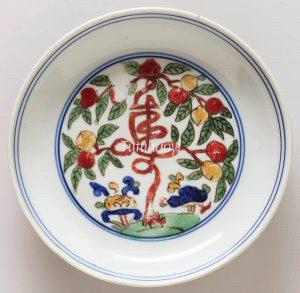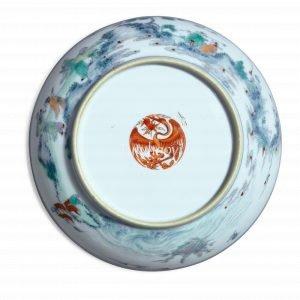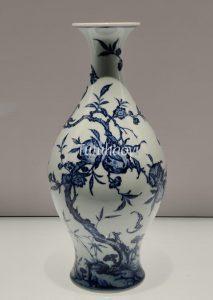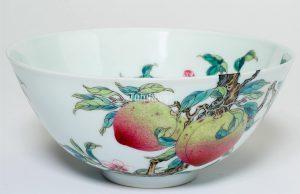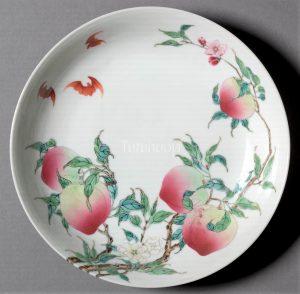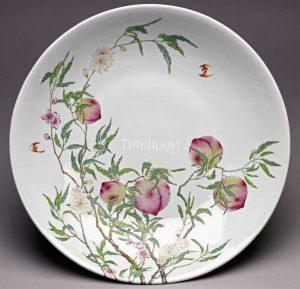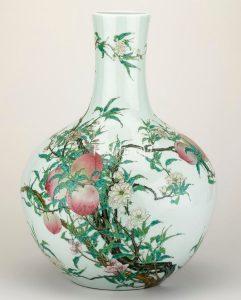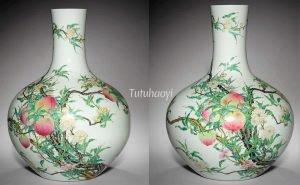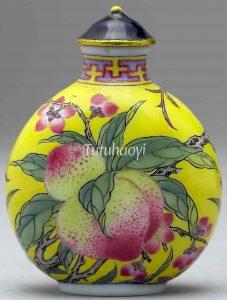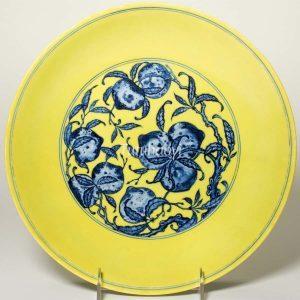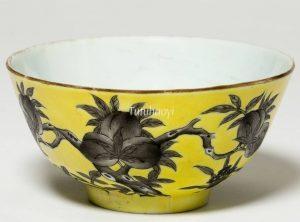Peach fruit
桃
© Tutuhaoyi.com owns the copyright of the description content for the images attached. Quoting all or part of the description content on this page is permitted ONLY IF ‘Tutuhaoyi.com’ is clearly acknowledged anywhere your quote is produced unless stated otherwise. (本页描述内容版权归Tutuhaoyi.com所有,转发或引用需注明 “Tutuhaoyi.com”, 侵权必究, 已注开源信息的条目除外。)
The peach fruit usually symbolises longevity or immortality in Chinese pictorial art. The origin of this idea started from legends dating back to the third century. Read Dr Yibin Ni‘s research article for related literatures and legendary stories from ancient China.
As a symbol of longevity, the peach fruit is often paired with the other potent symbols with similar meaning, such as the crane, the lingzhi (灵芝 fungus), and the shou 寿 character for ‘longevity’, and is also associated with legendary immortals such as the monkey or the Monkey King (Sun Wukong 孙悟空), the Old Man of the South Pole (南极仙翁), also known as the Star God of Longevity (寿星), and Dongfang Shuo (东方朔), whose prominent deeds include stealing divine peaches from the Queen Mother’s peach garden.
Related Blogs:
The Birthday Party of the Queen Mother of the West 西王母寿宴
Why does peach symbolise longevity and immortality in traditional Chinese culture?
Related Figures and Stories:
Related Pun Rebus Pictures:
May you enjoy long life and always be blessed by good fortune 福寿万年
Fig 1: polychrome saucer dish, Jiajing period (1522–66), Ming dynasty, courtesy of Minneapolis Institute of Art
Fig 2: water dropper, Ming-Qing dynasty, courtesy of the National Palace Museum, Taipei
Fig 3: porcelain dish, Kangxi period (1662–1722), Qing dynasty, courtesy of Minneapolis Institute of Art
Fig 4: porcelain dishes, Kangxi period (1662–1722), Qing dynasty, courtesy of the Trustees of the British Museum
Fig 5-6: porcelain dish, Kangxi / Yongzheng period, early Qing dynasty, courtesy of the Sotheby’s Auction House, 18 March 2021, lot 146
Fig 7: porcelain vase with underglaze blue decoration, Yongzheng period (1723–35), Qing dynasty, courtesy of Shanghai Museum, China; Photograph by Rachel Ma
Fig 8: famille rose porcelain bowl, Yongzheng period (1723–35), Qing dynasty, courtesy of the Art Institute of Chicago, Reference Number 1939.498
Fig 9: famille rose porcelain dish, Yongzheng period (1723–35), Qing dynasty, courtesy of the Cleveland Museum of Art
Fig 10: famille rose porcelain dish, Yongzheng period (1723–35), Qing dynasty, courtesy of the Trustees of the British Museum
Fig 11-12: famille rose enamelled vase, Qianlong period (1736–95), Qing dynasty, courtesy of the Metropolitan Museum of Art, NY
Fig 13: famille rose enamelled vase, Qianlong period (1736–95), Qing dynasty, courtesy of the Trustees of the British Museum
Fig 14: pair of famille rose enamelled vase, Qianlong period (1736–95), Qing dynasty, courtesy of the Cleveland Museum of Art
Fig 15: snuff-bottle, Qianlong period (1736–95), Qing dynasty, courtesy of the National Palace Museum, Taipei
Fig 16: snuff-bottle, Qianlong period (1736–95), Qing dynasty, courtesy of the National Palace Museum, Taipei
Fig 17: porcelain dish, Qianlong period (1736–95), Qing dynasty, courtesy of the Art Institute of Chicago
Fig 18: porcelain cup, Guangxu period (1875–1908), c. 1894, Qing dynasty, courtesy of the Art Institute of Chicago, Reference Number 2002.375.1
